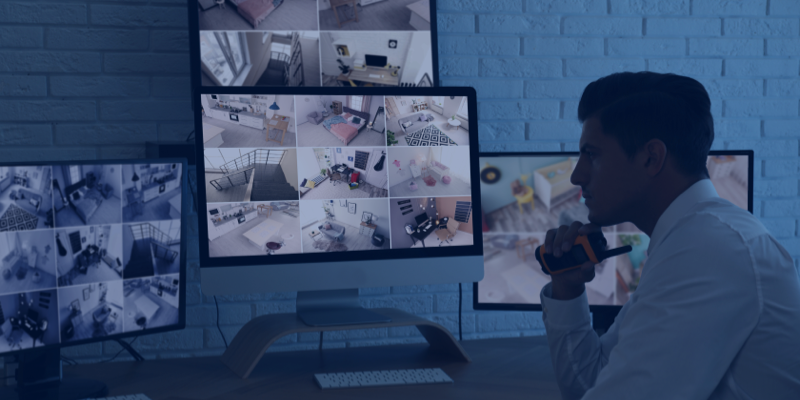Should I use live monitoring or event-based monitoring?
- Physical security

When we talk about remote video monitoring with companies operating in the physical security space, we’re often asked what the difference is between live and event-based monitoring. Both have their place in a company’s security strategy, but they each have pros and cons that should be considered before you commit.
This week, we want to explain these two main types of remote monitoring and go through their respective benefits, so you have the knowledge you need to secure your sites remotely in the way that’s best for your business.
What’s the difference?
Live video monitoring secures a site with operators reviewing video feeds in real time. This could be a single feed or several feeds from multiple cameras on your site. Monitoring live allows you to keep track of any activity onsite as it’s happening.
Event-based video monitoring uses alerts generated by motion sensors, whether built-in to the camera - such as line crossing or intrusion settings - or installed separately on site. When an alert is sent through, an operator will review the clip and decide whether action needs to be taken.
It’s possible to monitor much larger numbers of cameras using event-based monitoring, as operators don’t have to constantly watch a live feed; instead, they act on alarms with the help of technology.
Should I use live monitoring?
Live monitoring works best when used in a targeted way, identifying the specific areas of your site that you feel need constant surveillance. An operator monitoring in real time can only watch a handful of feeds whilst still being able to spot suspicious activity.
Monitoring sites live has its drawbacks. You’re relying on shifts of numerous, alert operators to keep your site safe; you should consider how many feeds each operator is responsible for, and for how long they monitor before swapping shifts. Operator fatigue is an unavoidable issue in live monitoring, and the best way to stop people becoming tired and losing concentration is employing more people for shorter shifts!
It is also worth bearing in mind that the cost of live monitoring is driven by the number of feeds being watched. This can become expensive if you were to request live monitoring of all your security cameras over an entire site, because you still need to ensure your operators aren’t overloaded.
It’s also important you have the space to support lots of screens to view all the camera feeds - If the monitoring station isn’t large, a cramped set-up won’t provide the best working environment for operators to do their job effectively.
On-site technology also needs to be right for optimal live monitoring. To spot suspicious activity, you need security cameras that record good quality footage to give you enough visibility. Since you’re tracking activity in real time, it also helps to have cameras that can pan, tilt and zoom, so operators can hone in on potential threats. It may be that you need to upgrade hardware on-site to enable live monitoring, which is another cost to bear in mind.
What about event-based monitoring?
Event-based monitoring eases many of the pressures that are associated with live monitoring. Since operators are alerted when there is movement on-site, they don’t have to spend hours looking for suspicious activity - they can review what the sensors have detected. A smaller team focusing on alarm responses is a much more cost-effective option for many businesses.
However, on-site sensors regularly send thousands of false alarms to monitoring staff, triggered by non-human activity such as wildlife, trees blowing in the wind, and passing cars. If the sensors installed on site are particularly sensitive, they could become time-consuming (and therefore more expensive) to monitor.
Processing thousands of false alarms also generates unnecessary work for operators trying to spot genuine criminal activity. If you’re planning on implementing event-based monitoring, it’s worth integrating video analytics technology, which can filter out false alarms to reduce workload and costs.
There are many different video analytics solutions available - some combine on-site hardware and software, and some, like Calipsa, are “plug and play” solutions that can easily integrate with your existing cameras and systems.
Combining a filtering technology like Calipsa’s with event-driven monitoring ensures monitoring companies have the processes and tech support in place to scale up, when there is an increased demand for their services. Software that cuts out the noise of false alarms also means that operators can stay motivated and focused on catching genuine incidents as and when they happen.
Want to learn more about how integrating Calipsa's False Alarm Filtering Platform takes event-based monitoring to the next level?








2 comments